Snack On Avocado Toasts Next Time You Have Bad Cramps During Your Period
You know it is coming. Your period. You have been tracking it with an app to get to know your monthly cycle better and you know what to expect: bloating, cravings, and everyone’s least favorite menstrual cramps.
For some women, period cramps can be annoying and a little bit uncomfortable, but for others, period cramps can be downright debilitating and can leave them sidelined from daily activities like exercise, social events, and even work.
Why do some women get period cramps and others do not? It all comes down to hormonelike substances called prostaglandins.
According to the Mayo Clinic, prostaglandins are the culprits that can cause inflammation and pain, which triggers the uterine muscles to contract during your monthly period. Uterine contractions are what help the uterus expel its lining each month when you are not pregnant. However, higher levels of prostaglandins are associated with more-severe menstrual cramps.
However, this is also a multilayered issue, explains Wendie Trubow, M.D., a board-certified ob-gyn with over 25 years of experience in the medical field.
“Multiple factors go into this including how heavily a woman bleeds, how tight her cervix is, how inflamed her system is, and her perception of pain. All those blend together and some women will end up with more cramping than others.”
The good news is that certain types of food can help ease the pain of period cramps. Okay, so it is not the food itself that is a cure-all for every period cramp you may ever encounter, but rather the impact these foods may have on the body processes and hormones that initiate period cramps.
However, if you are looking for some general nutrition tips that can help alleviate period cramps, Dr. Trubow says to avoid processed foods, get enough rest (this supports detox and absorption), manage stress (which also supports absorption, detox, and digestion) and to take vitamins such as methylated B vitamins. This assists with methylation and detox, which supports proper hormone balance.
Dr. Trubow notes that it is important to do all of these things over the entire course of the month and not just during the week of your period. “Over the course of the month, if a woman can avoid processed foods that are inflammatory, boost their intake of cruciferous vegetables, which help promote proper hormone balance, get enough rest so the adrenals are not tapped out (imbalanced adrenals can lead to imbalanced female hormones) and manage stress levels, this can all help decrease or lessen monthly menstrual cramps.”
If you suffer from monthly menstrual cramps, you may want to put down the crunchy salty chips and that pint of sugary ice cream and reach for some of these foods instead. Here are twelve foods that may help with period cramps. (Go ahead and add these to your grocery list right now).
You usually have a general idea of when your period is coming. You may have been tracking it with an app to get to know your monthly cycle better and you know what to expect: bloating, cravings, and menstrual cramps. The pain can range from being mildly uncomfortable to downright debilitating. One way to soothe the ache: foods that help with period cramps.
Why do some women get period cramps while others don't? It all comes down to a type of chemical in your body called prostaglandins. This hormone-like substance can trigger the uterine muscles to contract during your period, according to the Mayo Clinic. Higher levels of prostaglandins are associated with more severe cramps.
That said, multiple factors can affect how much pain your period causes, "including how heavily a woman bleeds, how tight her cervix is, how inflamed her system is, and her perception of pain,” says Wendie Trubow, MD, an ob-gyn.
The good news is that certain foods can help ease cramps. Okay, they won't make the discomfort go away directly, but they may have an impact on the body processes and hormones that lead to period cramps.
Some pro tips on a relatively pain-free period: Avoid processed foods, get enough sleep, manage stress, and take supplements such as methylated B vitamins, which supports hormonal balance, says Dr. Trubow. To get the most of these practices, do them over the entire course of the month, not just during your period.
If you get really bad cramps, you may want to put down that bag of chips or pint of ice cream even when the cravings hit. Here are 12 foods that'll help you feel better throughout your cycle.
Avocados
Avocados contain omega-3 fatty acids and magnesium, both of which may help reduce period cramps, says Alli Magier, RD, the founder of Well by Alli. “Omega-3 fatty acids lower inflammation and help prevent excess prostaglandin production,” she explains. Magnesium, known as “nature’s relaxant,” can also help ease smooth muscle and lower the production of prostaglandins.
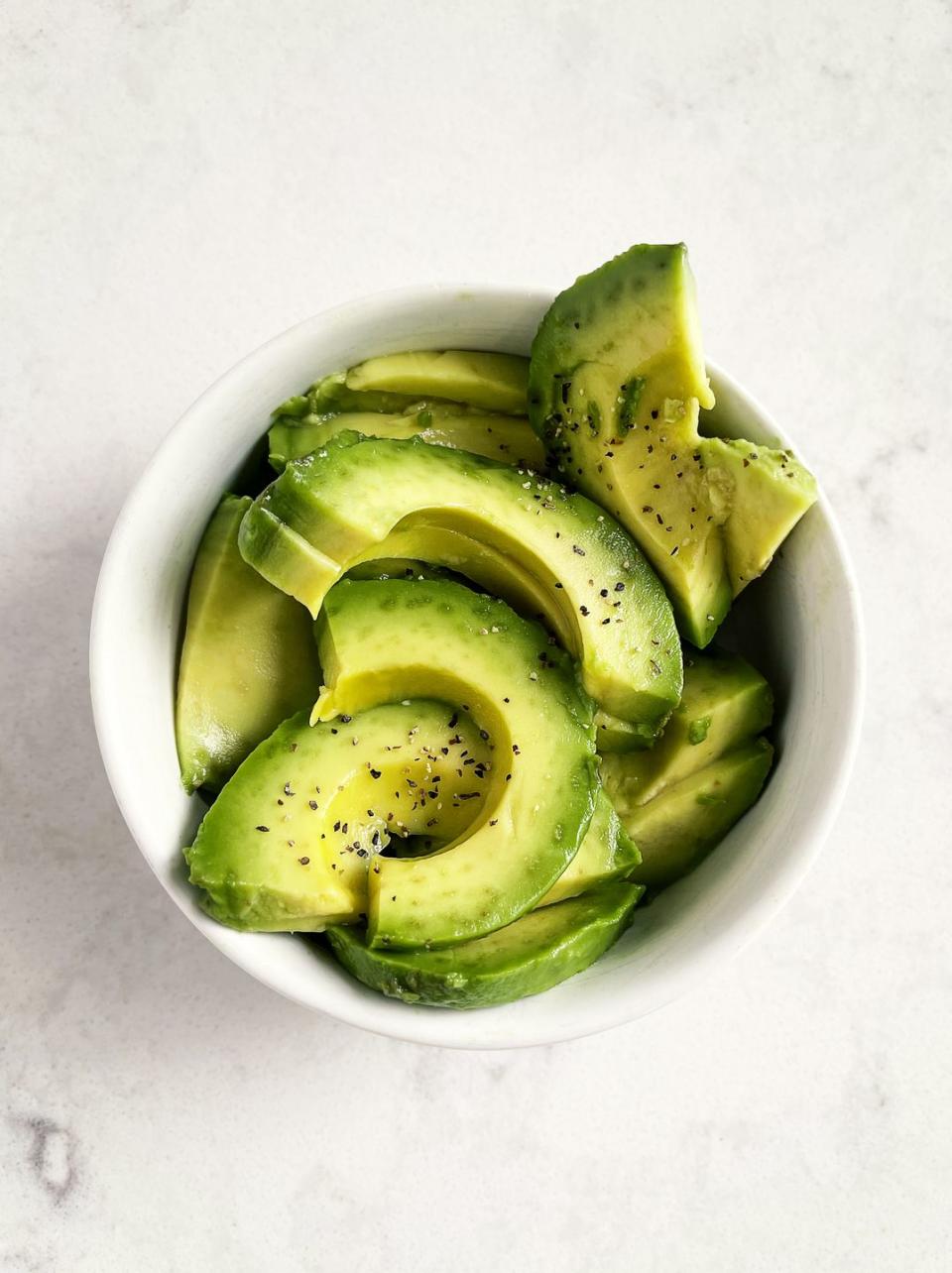
Chamomile Tea
Chamomile tea contains anti-inflammatory compounds and can help reduce pain by inhibiting certain enzymes known to cause pain, says Magier.
Note that chamomile tea works best when you have it before the pain starts (so a few days before your period), according to a 2019 article published in the Journal of Pharmacopuncture.

Cruciferous Vegetables
Estrogen dominance and poor estrogen detoxification can contribute to endometriosis and dysmenorrhea (a.k.a. painful period cramps), says Morgan Goodstadt, RD, the founder of Good Nutrition. “Broccoli and Brussels sprouts contain antioxidants and nutrients that help the liver detoxify excess estrogen. They are also high-fiber foods, which support estrogen clearance and elimination through the bowels,” she adds.
Staying regular, which these veggies could help with, is super important for moving excess estrogen out of the body and supporting your gut too.
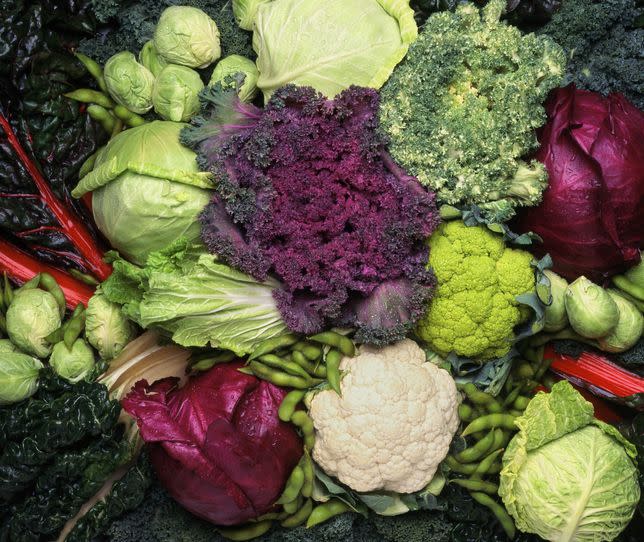
Fermented Foods
Fermented foods such as kefir, kimchi, kombucha, pickled vegetables, sauerkraut, and yogurt contain probiotics that help keep your gut healthy, says Magier, which is important for estrogen balance and period pain. The good bacteria from fermented foods can balance your gut microbiome and regulate estrogen metabolism and elimination.
In addition, low calcium intake can increase muscle contractions and cramping, so add fermented dairy to your diet for max relief.
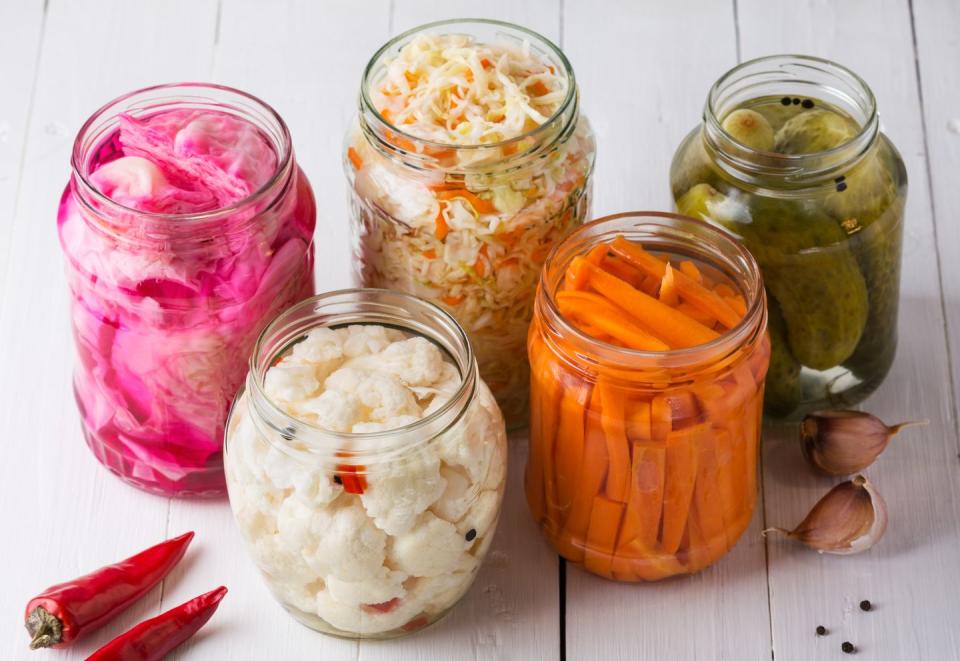
Salmon
Prostaglandins are primarily made from omega-6 fatty acids, which are naturally inflammatory, says Goodstadt. “For optimal health, we want to consume a good ratio of omega-3 to omega-6 fatty acids," she says. One way to do that? Consuming lots of omega-3-rich foods like salmon and sardines. (Yum!)
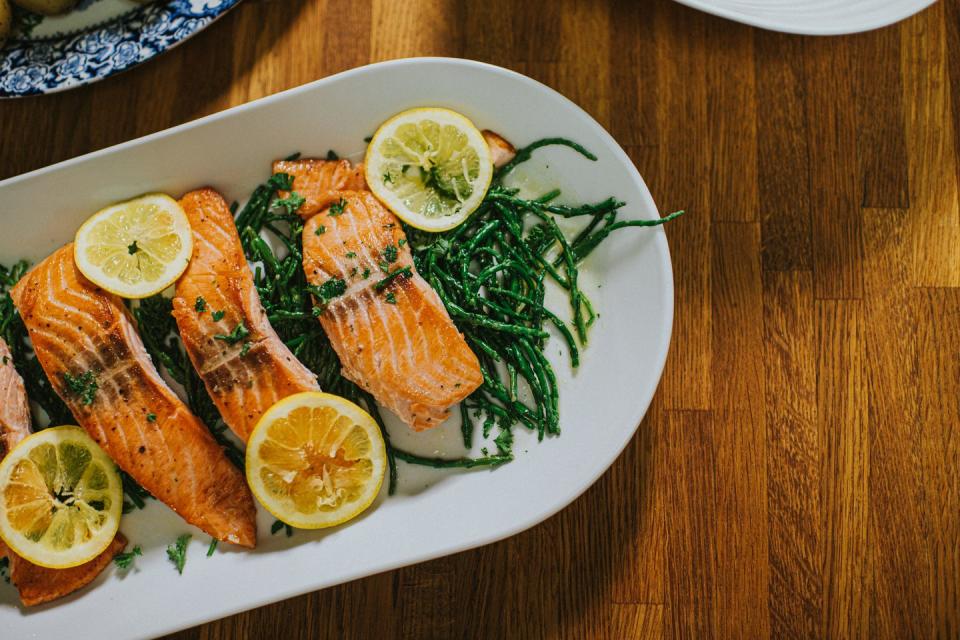
Flaxseeds
Flaxseeds are one of Goodstadt's all-time favorite foods for hormone health in general. “Not only are they a great source of fiber and healthy omega-3 fats, but they also contain compounds called lignans, which can bind to and detoxify excess estrogen,” she says.
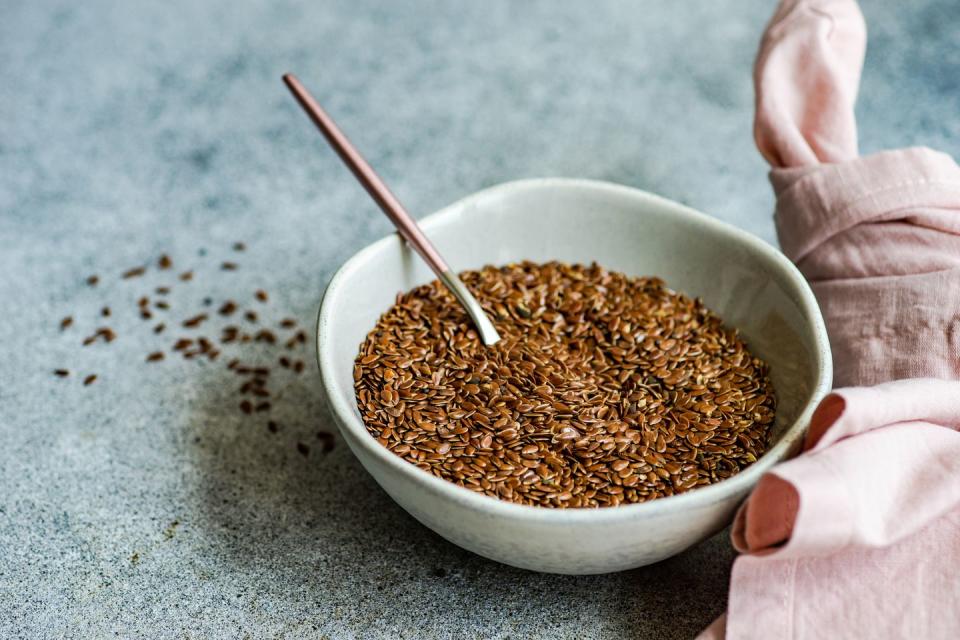
Ginger
Ginger can lower the intensity of period cramps and pain, a 2019 study published in the Journal of Obstetrics & Gynecology Science found. It has potent anti-inflammatory properties. It also helps soothe the stomach and reduce nausea, another common PMS symptom. Enjoy it as a spice in a dish or add slices to a steaming mug of tea!
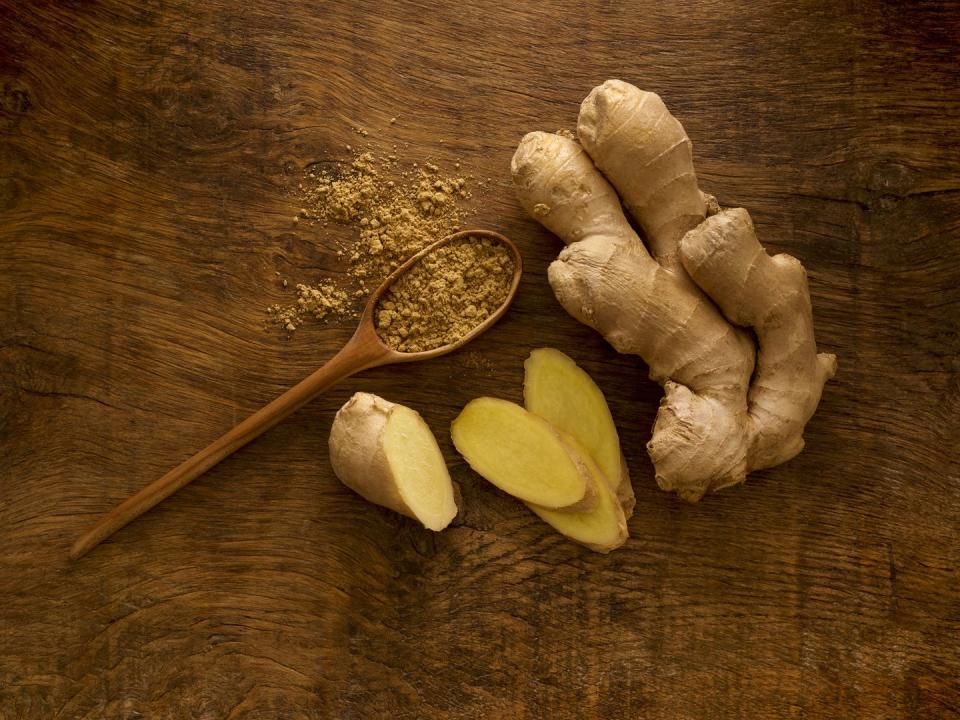
Leafy Green Vegetables
Spinach and Swiss chard are full of anti-inflammatory compounds, fiber, manganese, and vitamin E, per Magier. “Adequate fiber intake is important for reducing PMS symptoms because it helps keep the gut microbiome healthy and supports normal estrogen metabolism,” she says. Vitamin E can tone down prostaglandins production, and low manganese levels are associated with more severe pain during menstruation.
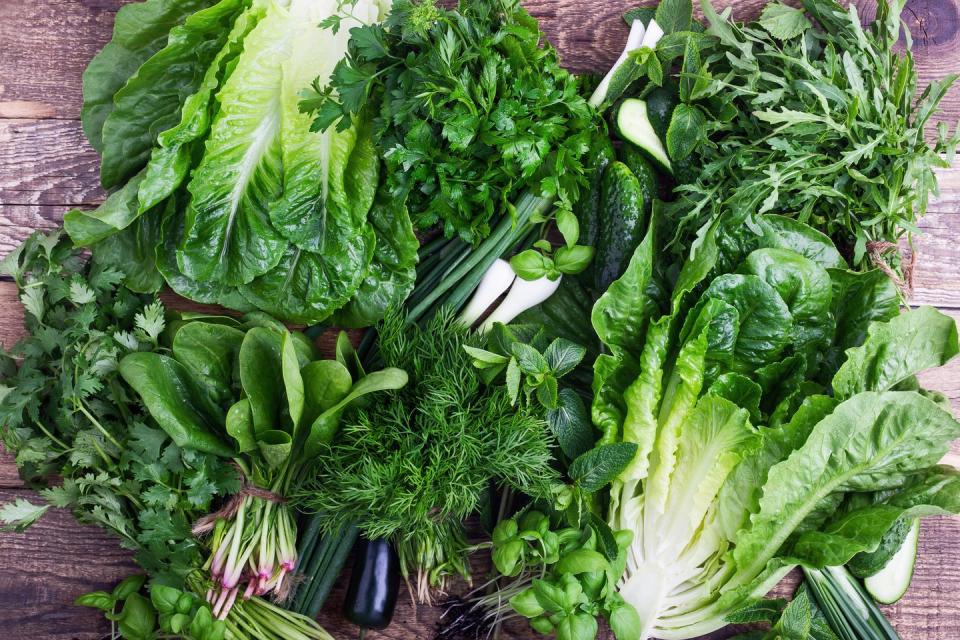
Almonds, Cashews, And Walnuts
Nuts are a healthy source of minerals and unsaturated fats, explains Magier. In particular, walnuts are great sources of anti-inflammatory omega-3 fatty acids, which can help lower prostaglandin production and combat period cramps. Almonds and cashews pack a ton of magnesium, which is associated with less period pain.
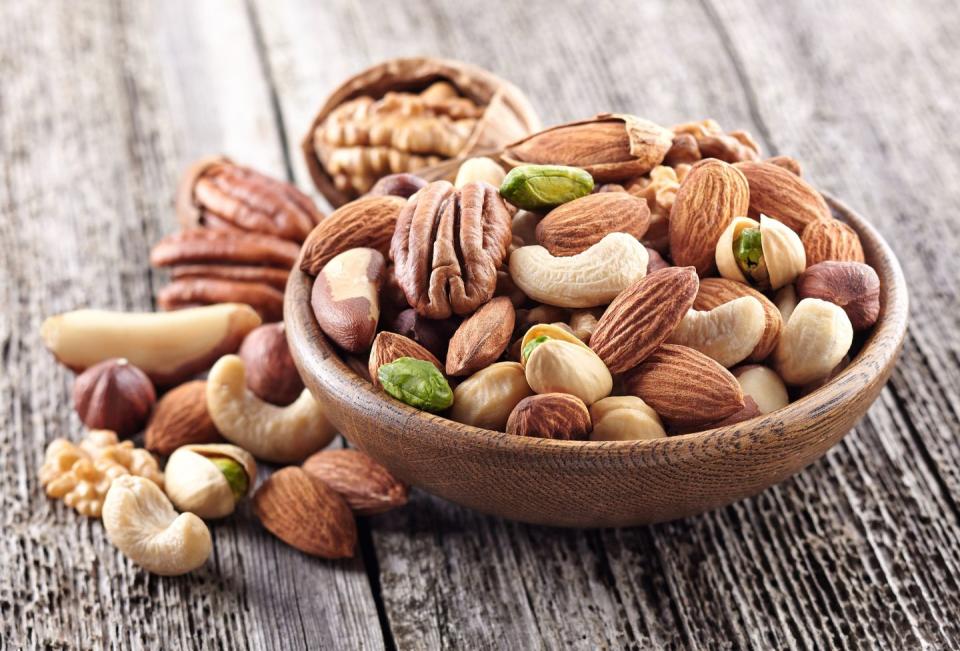
Peppermint Tea
Peppermint contains the active ingredient menthol, which has been shown to relieve pain. It can reduce the duration and severity of pain associated with periods, a 2016 study published in the Iranian Journal of Nursing and Midwifery Research showed.
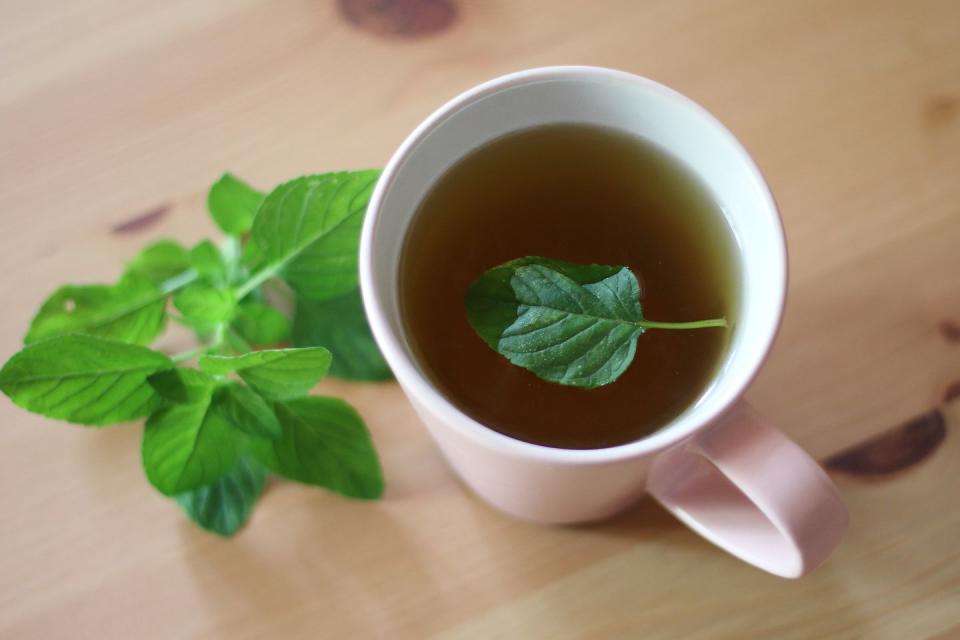
Pumpkin Seeds
“Pumpkin seeds are one of my favorite high-magnesium foods, making them excellent for reducing period cramps,” says Goodstadt.
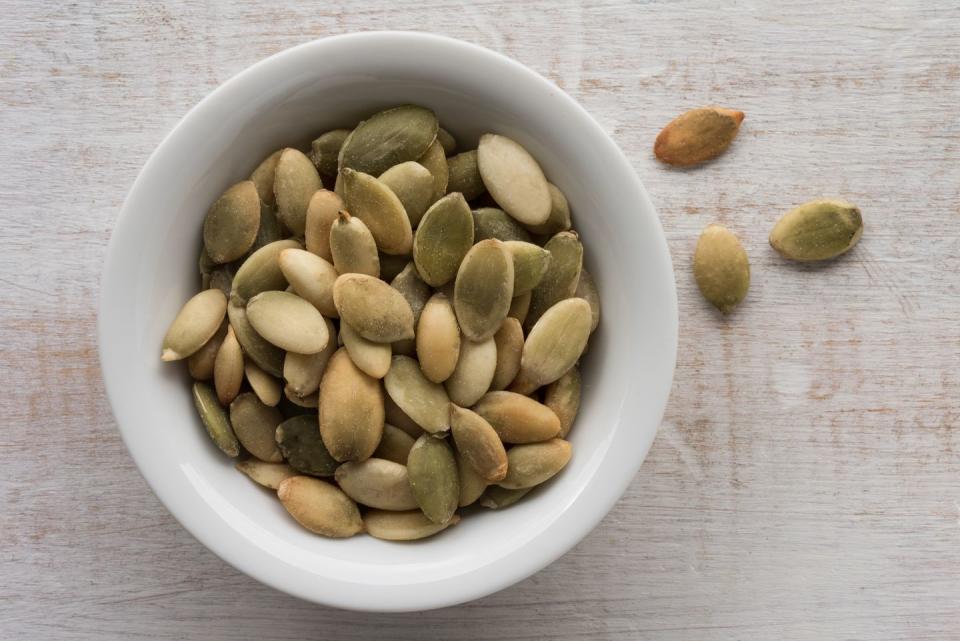
Turmeric
Turmeric contains a compound called curcumin, which has powerful anti-inflammatory properties and is also a hormone modulator and pain reliever. It has been found to address some of the root causes of period pain, including estrogen dominance and endometriosis, per a 2020 study published in the International Journal of Molecular Medicine.
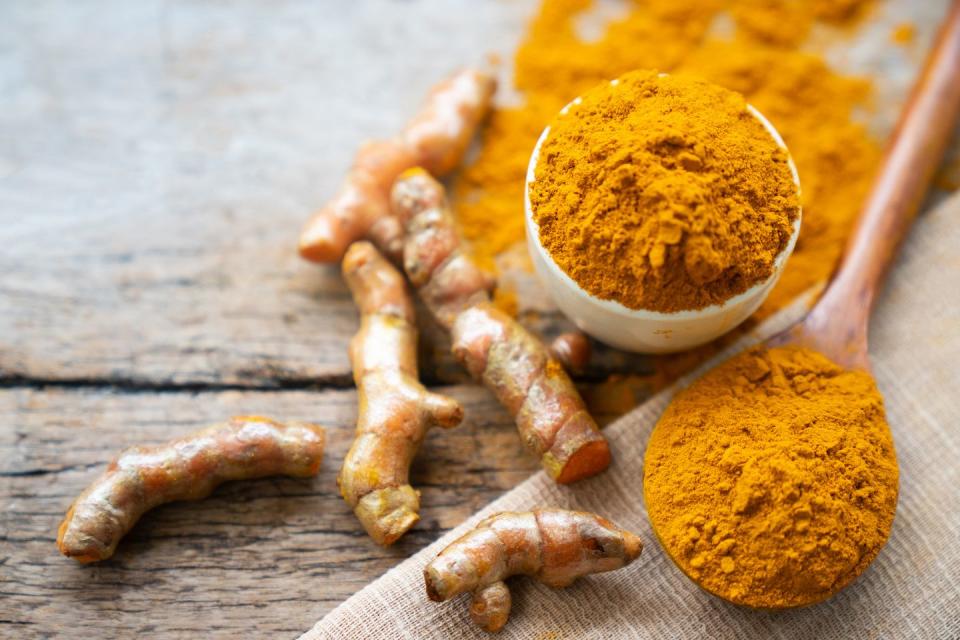
You Might Also Like

